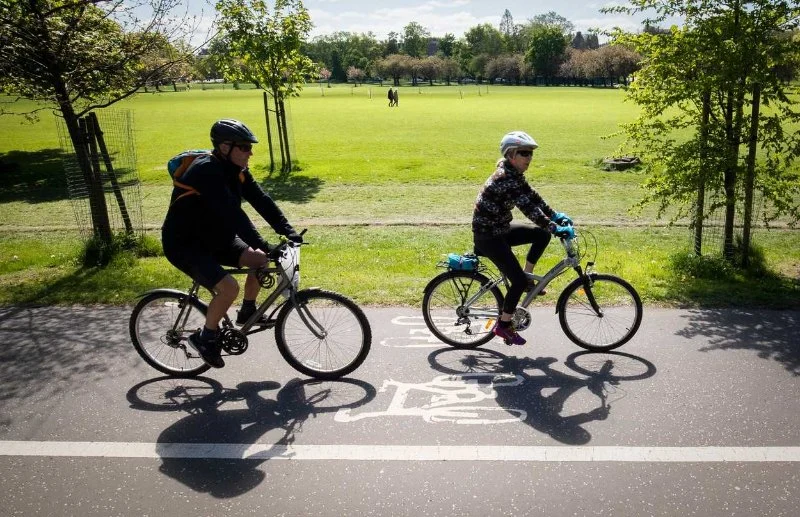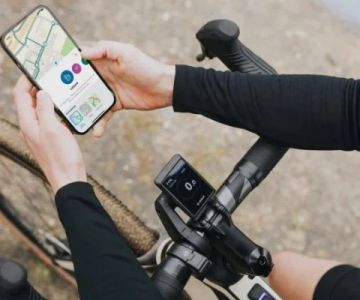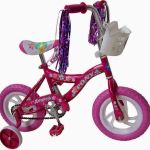
How to Get Sponsored as a Cyclist
- 1- Understanding Cycling Sponsorship
- 2- Types of Sponsorships in Cycling
- 3- Steps to Get Sponsored as a Cyclist
- 4- Creating an Attractive Profile for Sponsorship
- 5- Real-Life Case Study: A Cyclist's Journey to Getting Sponsored
- 6- How to Choose the Right Sponsor for You
1. Understanding Cycling Sponsorship
Getting sponsored as a cyclist is a dream for many who aspire to take their passion for cycling to the next level. But what does it really mean to be sponsored in the world of cycling? Sponsorship in cycling involves a company or brand offering financial or material support in exchange for brand visibility and endorsement from the cyclist. This can be anything from paying for race entry fees to providing high-quality bikes and gear.
There are several benefits to securing a sponsorship, such as access to premium equipment, financial assistance, and the opportunity to participate in larger races and events. However, sponsorship also comes with the responsibility of representing the brand and maintaining a strong public image, which makes getting sponsored a two-way commitment.
2. Types of Sponsorships in Cycling
There are different types of sponsorships cyclists can aim for, depending on their skill level, competition goals, and social presence. Here are some of the common types:
- Product Sponsorship: This type of sponsorship involves a brand providing free products such as bikes, gear, or clothing in exchange for the athlete using and endorsing their products.
- Cash Sponsorship: This sponsorship involves financial support, often for race entries, travel expenses, and training. Cash sponsors typically expect athletes to wear their brand logo and promote them on social media.
- Team Sponsorship: Cyclists may be sponsored as part of a team, where a company supports an entire team of cyclists, often covering the cost of travel, training, and equipment in exchange for the team's promotional efforts.
- Event Sponsorship: In this case, the cyclist is asked to represent a brand during specific events or races, typically with a focus on product promotion or brand visibility during the event.
Understanding these types of sponsorships will help you decide what aligns best with your goals as a cyclist and which brands might be interested in sponsoring you.
3. Steps to Get Sponsored as a Cyclist
Securing a sponsorship as a cyclist requires strategy, networking, and dedication. Here are some actionable steps to help you land your first sponsorship:
- Build Your Presence: Sponsors want to see you have a substantial following or audience, whether it’s on social media or within your local cycling community. Building an engaged presence will make you more attractive to potential sponsors.
- Participate in Events: Attend local races, cycling events, and competitions to show off your skills. Being an active participant and performing well will increase your chances of being noticed by sponsors.
- Create a Sponsorship Proposal: When approaching brands, create a well-crafted sponsorship proposal. Include details about your cycling background, your achievements, your audience demographics, and why you would be a good fit for their brand.
- Reach Out to Potential Sponsors: Don’t wait for sponsors to come to you. Reach out to brands and companies that align with your values and interests. Personalize your pitch and showcase why you’re a great match for their sponsorship program.
By following these steps and showing your dedication to the sport, you can increase your chances of being sponsored.
4. Creating an Attractive Profile for Sponsorship
One of the most important aspects of securing sponsorship is presenting yourself as an attractive investment for potential sponsors. Here’s how to create an appealing profile:
- Professional Bio: Have a clean, well-written bio that showcases your achievements, skills, and goals as a cyclist. Highlight your unique strengths.
- Social Media Engagement: Build and maintain active profiles on platforms like Instagram, Facebook, and YouTube. Engage with your audience and showcase your cycling journey, training, and competition results.
- High-Quality Photos and Videos: A picture is worth a thousand words. Include high-quality images and videos that showcase your cycling skills and personality, as sponsors will want to see your brand potential.
- Testimonials and Results: Include any testimonials from coaches, event organizers, or fellow cyclists that highlight your dedication and performance. Share race results and other tangible achievements.
Having a strong, consistent profile across all platforms increases your visibility and shows sponsors that you are committed to your cycling career.
5. Real-Life Case Study: A Cyclist's Journey to Getting Sponsored
Take the story of Alex, a competitive cyclist from California who secured his first sponsorship with a bike brand after years of dedication. Alex started by posting regular updates of his training sessions, races, and results on social media. He consistently engaged with followers and even worked with local cycling events to increase his visibility. After participating in several regional competitions, he reached out to a small but growing bike company with a well-crafted proposal. His proposal highlighted his race results, his growing social media presence, and his connection with the cycling community. As a result, the brand saw the potential in Alex’s passion and agreed to sponsor him.
Alex’s story shows that with dedication and a smart approach, it’s possible to secure sponsorship and make a living out of your passion for cycling.
6. How to Choose the Right Sponsor for You
When you receive sponsorship offers, it’s important to choose the one that aligns with your values, goals, and lifestyle. Here’s how to make the right choice:
- Align with Your Passion: Choose sponsors that align with your cycling style, whether you’re into mountain biking, road racing, or casual cycling.
- Check the Brand’s Reputation: Research the sponsor’s reputation in the cycling community. Work with brands that are known for quality and integrity.
- Evaluate the Offer: Review the details of the offer, including financial support, product benefits, and long-term potential. Ensure the partnership will be mutually beneficial.
Choosing the right sponsor is crucial for your career growth. Make sure you find a sponsor that fits both your cycling ambitions and your personal values.







 Billet BMX5.0 (2 reviews)
Billet BMX5.0 (2 reviews) Far East Children Bicycle Factory1.0 (1 reviews)
Far East Children Bicycle Factory1.0 (1 reviews) Archer Motorsports, Inc.4.0 (8 reviews)
Archer Motorsports, Inc.4.0 (8 reviews) YEP Bike Works4.0 (55 reviews)
YEP Bike Works4.0 (55 reviews) Gorham Bike & Ski4.0 (498 reviews)
Gorham Bike & Ski4.0 (498 reviews) Alchemy Bikes4.0 (37 reviews)
Alchemy Bikes4.0 (37 reviews) How to Teach Kids to Ride a Bike: A Step-by-Step Guide for Parents
How to Teach Kids to Ride a Bike: A Step-by-Step Guide for Parents Tips for Riding on Busy City Streets: Smart Strategies for Urban Cyclists
Tips for Riding on Busy City Streets: Smart Strategies for Urban Cyclists Best US National Parks for Mountain Biking: Ride Epic Trails Across America
Best US National Parks for Mountain Biking: Ride Epic Trails Across America Best Aero Helmets for Time Trials and Racing
Best Aero Helmets for Time Trials and Racing How to Clean and Lubricate Your Bike Chain Like a Pro
How to Clean and Lubricate Your Bike Chain Like a Pro 10 Must-Have Items for Long-Distance Cycling Trips
10 Must-Have Items for Long-Distance Cycling Trips